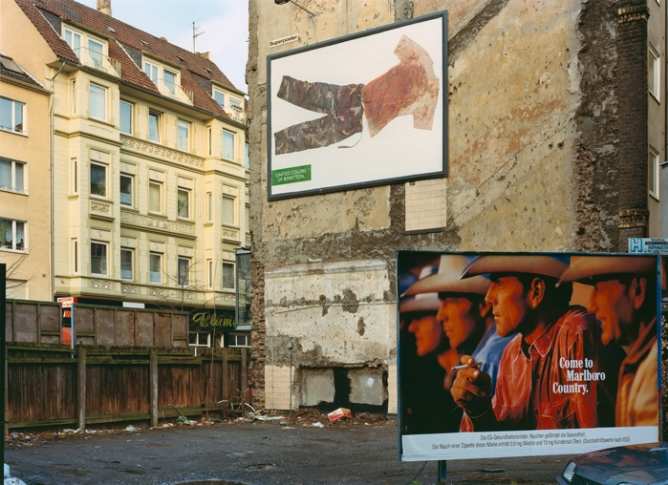Max Regenberg
Max Regenberg (*1951 in Bremerhaven, Germany). He lives and works in Cologne. Following training to become a promotional photographer, Regenberg emigrated to Canada in 1977. Back in Cologne, he worked from 1980 onwards on the long-term study, “The human likeness in advertising in the public space”. At the end of the 80s he again worked as an independent promotional photographer, and since 2000 he has been devoting himself exclusively to his freelance artistic works.
Interview with Max Regenberg
The topic of the festival is “Innere Sicherheit – The State I Am In” – which includes political aspects of “Homeland Security” but also very personal, private aspects. How do you relate to these issues?
Until recently, inner security was, for me, a deeply self-evident state. Associated with this was the intra-societal security of living out my individual opinion and artistic confrontation and revealing, or showing, my freely chosen topic without having to fear any kind of reprisals by superordinate posts. Due to the economic, political global situation which has reached an extreme crisis point within the last 5 years, and religiously motivated processes and events associated with this, the issue of external and internal security has shifted fundamentally. The threat to it is now affecting all societies and every single individual.
How do you understand your work in the context of “Innere Sicherheit”?
My long engagement with the topic of image, specifically the photographed promotional image, confirmed my hypothesis that images in the public space always represent a disputable object and a factor of uncertainty which contains societal dynamite for confrontations. Here I would just like to list the Benetton billboards which, over a period of ten years, with images on posters have opened up a discourse which, in societies around the world, has brought discordant opinions to light and has deeply unsettled consumers. Courts were obliged ultimately to decide over their prohibition and/or censorship in individual states, as people felt physically threatened by the campaign’s visual messages such as AIDS, birth, sexuality, violence, war and death penalty. This is drawn out right to the present day; precisely this last Benetton campaign by Oliviero Toscani, which is to be re-contextualised after 16 years within the scope of the Internationale Photoszene on poster walls in Cologne on Ebertplatz, will now be subject to censorship. The company Ströer, as surface owner of the poster walls there, has rejected the posting there of the motif “Condemned to Death”, prepared by me in 2000 and conceived in the exhibition as a large-format poster, due to fear that the image could have the potential to jeopardise inner security.
What is your estimation of the various genres of photography?
The various genres of photography have already converged, homogenised, in recent years, and, in my opinion, will continue to do so ever further. They had been guaranteed and maintained only through and by specialists. The general democratization of the image as a medium, the simplification of the technical mastery of imaging devices enables every individual to take part in the public, global visual universe as a producer.
How do you differentiate, for example, between artistic or documentary photography, and what role does promotional photography play, do you think, in society? And is that different now to the way it was 10 or 15 years ago?
For me, the question doesn’t bear on my wanting to see a claim of differentiation realized between artistic and documentary photography. There are too many examples, in photography history, of documentary works that make a specification, or fixation, on any kind of style seem absurd and downright wanton. This applies to the exact same extent, of course, to any strictly artistically binding statements in reference to the documentary content of photographic works.
Promotional photography has now finally overcome its role, assigned to it in the past, as a supplier of information. Thanks to, and with the help of, art, it has found a way of taking up the perpetual accusation of clandestine seducers and manipulators and of transforming it, for itself, into a quiet acceptance by society.
Promotional photographs are the images of economics, and they therefore fulfil an elementary societal task in respect of uninterrupted consumerism, and primacy of taking action is likewise in the hands of the economy.
Nations that have chosen capitalism as their form of society live in a hyper-commercial consumer world, which through digitization and honing of their image product have created possibilities of producing, through the emotionalization of promotional images, an undertow which the single individual can no longer withstand.
Today’s images continue to generate desires for taking part, and this taking part is being fulfilled globally. 15 years ago we were still striving to live in the images or their illustrations. Now, we here we are: the single individual has given up his or her natural distance from the image and is living in, and with, the prescribed visual worlds.
